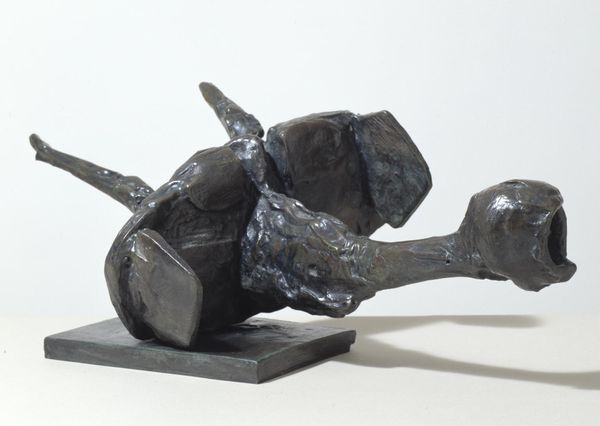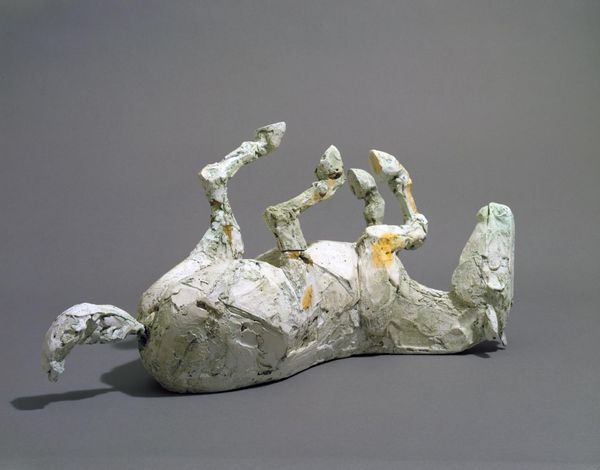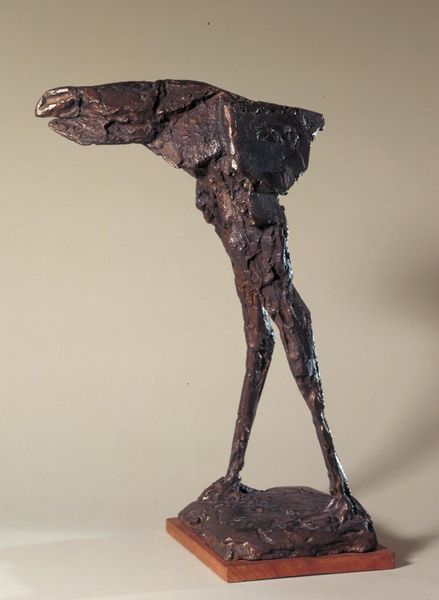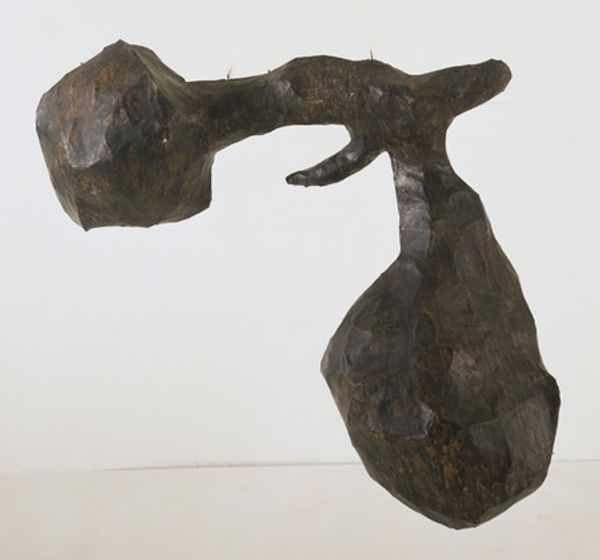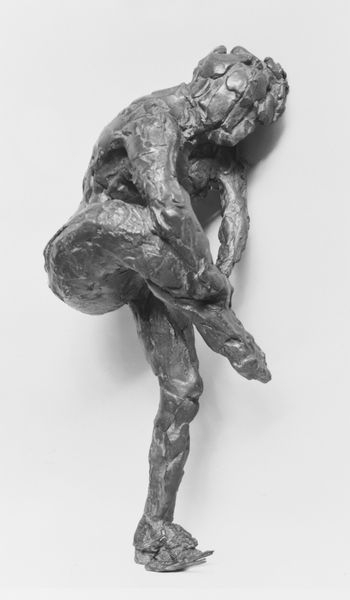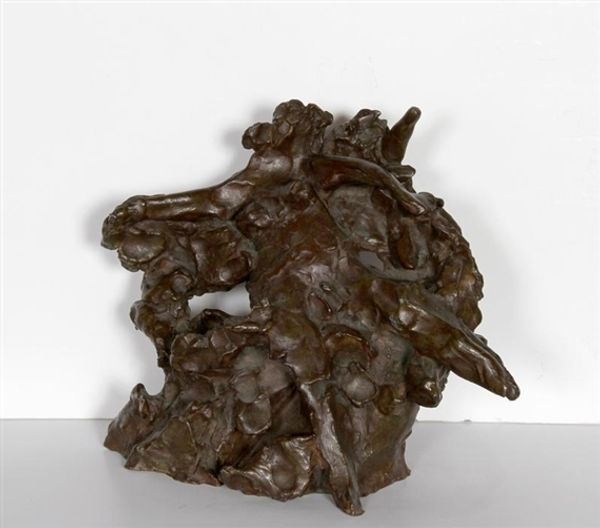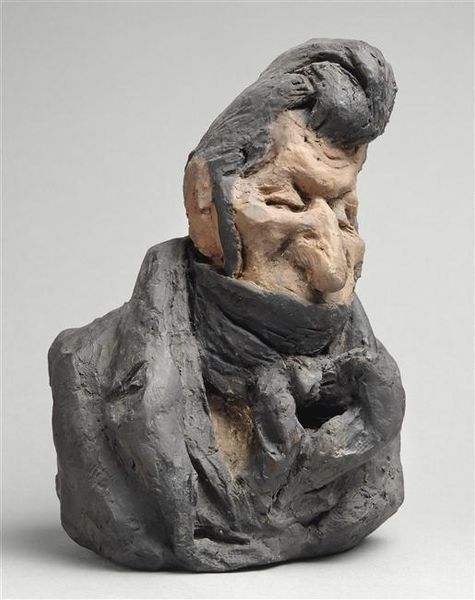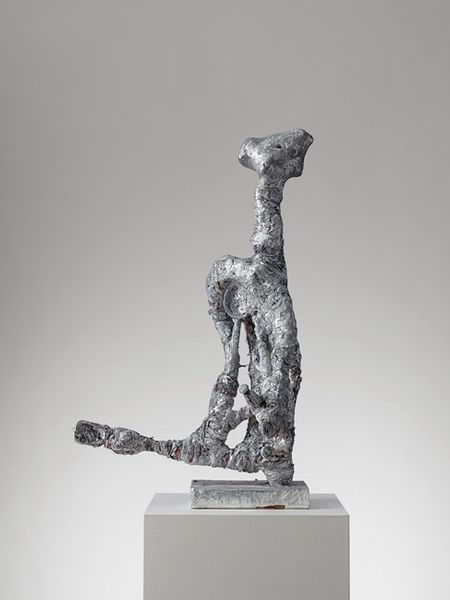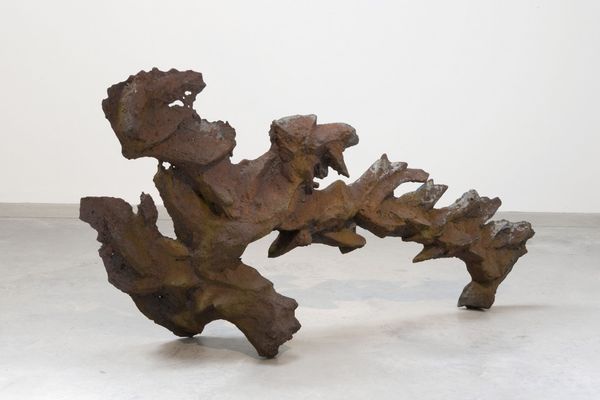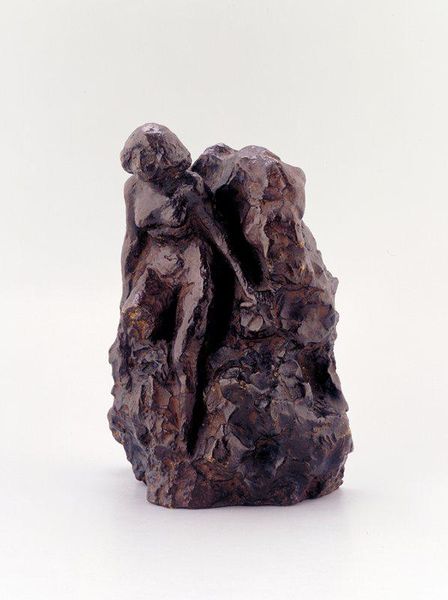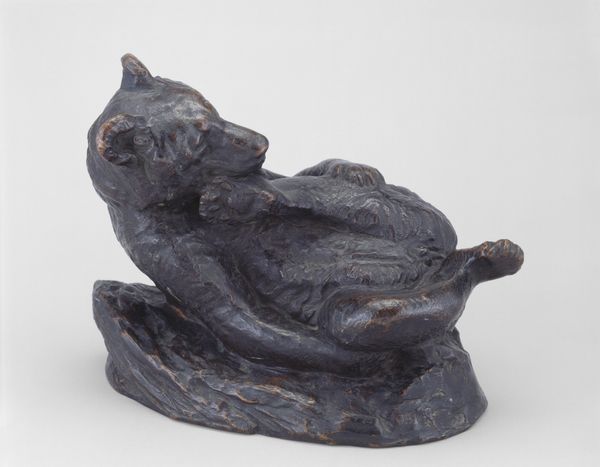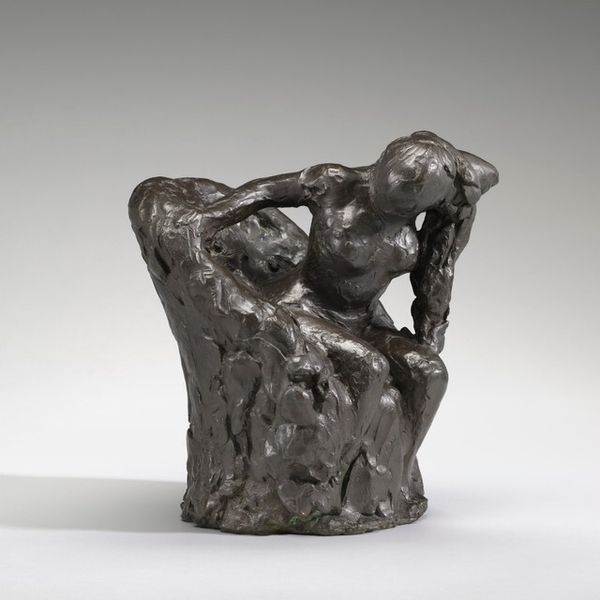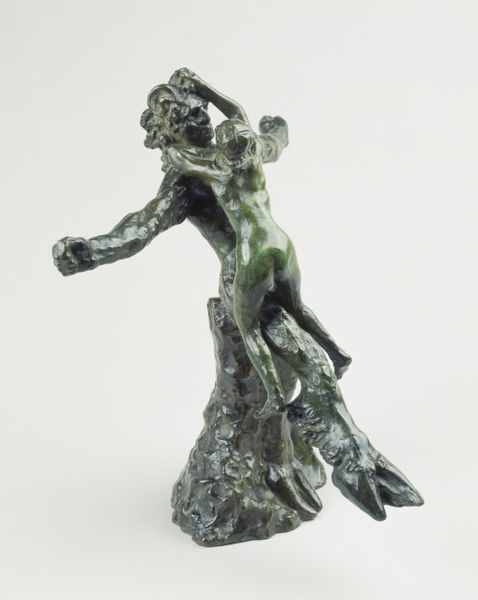
Dimensions: object: 130 x 600 x 335 mm
Copyright: © Frink Estate | CC-BY-NC-ND 4.0 DEED, Photo: Tate
Editor: Here we have Dame Elisabeth Frink’s "Dead Hen," held in the Tate Collection. It's quite visceral. What socio-political commentary might Frink be making with this piece? Curator: The post-war period, especially in Britain, saw a lot of art grappling with trauma and mortality. Do you think presenting death so bluntly, and in something so commonplace as a hen, democratizes the experience of grief? Editor: That's a great point! It makes death relatable, maybe even mundane, highlighting a universal experience. Curator: Exactly. And consider how the rough texture of the bronze contrasts with the smooth, idealized forms often seen in classical sculpture. How does that choice affect its public reception? Editor: It definitely disrupts expectations. I hadn’t considered the social implications of texture before. Thanks!
Comments
Join the conversation
Join millions of artists and users on Artera today and experience the ultimate creative platform.
tate 6 months ago
⋮
Frink frequently portrayed animals in her work. Birds, in particular, began to appear in her sculpture shortly after the Second World War. They were used by her as vehicles for strong feelings such as panic, tension or aggression. They have also been read as having connotations of military might, particularly air power. Although many of Frink's bird subjects appear predatory and aggressive, the hen in this work is a victim whose pose evokes the tragic aftermath of conflict. The sculpture is one of a series, made during the same period, depicting animals in their death throes. Gallery label, August 2004
